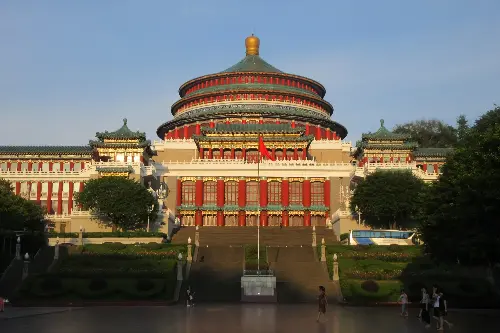
In my opinion, Sichuan is the most beautiful province in China. It’s home to many national parks and hiking trails that provide spectacular and scenic views. You’ll see snow-capped mountains, golden-colored trees (in the autumn), cerulean lakes, and waterfalls during your trip.
The gateway to this part of China is Chengdu, a chill city that’s one of my favorites. Chongqing used to be part of Sichuan province but became one of only four direct-administered municipalities in the country in 1997. It’s a massive megacity that has around 30 million residents, the combined total of urban and rural areas within the municipality. The city is also a jump-off point to famous natural and cultural attractions.
This guide can help you plan your trip to both places.
Getting a visa
Filipinos need to apply for a visa to enter China. These are the basic requirements:
- Original passport with at least one blank visa page and valid for at least six more months.
- You’ll also need to bring a photocopy of the emergency contact and information page.
- Old passport
- A recent 48mm x 33mm photo taken within the last six months.
- Photocopy of previous Chinese visas, if it isn’t your first time visiting.
If you’re a first-time applicant, you also need to submit the following: - Bank certificate and 6 months bank statement
- Certificate of employment (for employees)
- Business registration certificate (for owners)
- Stamped BIR income tax return
Get into Chengdu and Chongqing
There are no direct flights to either city from the Philippines. You’ll have to book a flight to Guangzhou, Shanghai, Xiamen, or Beijing. You can book another flight to Chengdu or Chongqing from any of the cities mentioned.
If you want to travel by train, I would recommend entering China via Guangzhou. You can reserve train tickets at www.trip.com . You can take the faster bullet train or a slower overnight train. For overnight trains, the hard sleeper is good enough if you just need to sleep. The soft sleeper cabin is more expensive but offers better accommodation. The hard seat may be cheap, but I wouldn’t recommend it unless you have no other choice.
Your nightmare scenario is a no seat ticket. You might have to sit or stand in the aisle or by the door in a full train overnight. I suggest booking your train tickets a month before your travel dates. This guarantees you get the seat type you want.
Get around
Both Chengdu and Chongqing have extensive public transportation systems. You can use the metro or bus to get to any point in the city. You can also take intercity trains or buses to get to some of the places on the itinerary.
Itinerary
This itinerary assumes you’ll start with one full day and that you’re already in Chengdu.
Chengdu
Day 1
Get an early start after breakfast. Head on over to the Chengdu Research Base of Giant Panda Breeding. You’ll see adult and baby pandas during your visit. You’ll see them playing, eating, and sleeping. There are also exhibits, samples, and models of different animals.
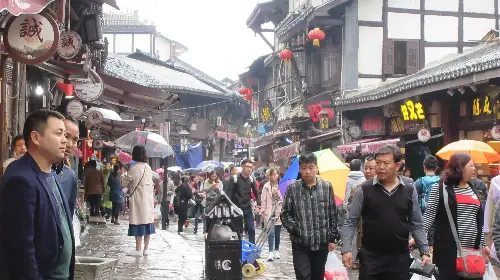
How to go to the research base: Board bus 655 or 87 then alight at the research base. You can also take metro line 3 then alight at Panda Avn. Station. Walk to exit A then board a bus to the research base.
Fees: CNY 55 entrance and CNY 10 for the bus inside the base.
After a visit to the research base, check out the pedestrian streets of Jinli and Kuanzhai. Both areas are centuries old and provide a glimpse of the city’s storied past. The restored and preserved traditional buildings contrast with the urban jungle surrounding it. You’ll find restaurants, teahouses, shops, and cafes.

The modern counterpart of Jinli and Kuanzhai streets is Chunxi Road. Other attractions you might want to visit if you are interested, they fit your budget, or if you have the time include the Sichuan Museum, Wuhou Temple, Tianfu Square, Mount Qingcheng, Sanxingdui Museum, and the Dujiangyan Irrigation System.
Day 2
Check out of your accommodation and prepare for a long day of traveling to Jiuzhaigou. The latter is a must-see park in Sichuan. You can take a flight to Jiuhuang Airport but it’s an expensive option. If you can afford it why not?
Your budget transportation options are:
Via bus
The trip can take up to 10 hours. You can take the bus from the following stations:
- Chengdu Xinnanmen Coach Station – CNY 168 (Departure times: 8:10 and 8:20)
- East Railway Station Coach Station – CNY 175-238 (Departure times: 8:30 and 9:30)
- Chadianzi Coach Station – CNY 174-238 (Departure times: 9:30 and 10:10)
I suggest buying your bus ticket a day before your trip.
Via train and bus combo
Take the train to Zhenjiangguan station. From Zhenjiangguan station, look for the buses bound for Jiuzhaigou. For train schedules and prices, check www.trip.com.
There’s a bullet train connecting Chengdu to Jiuzhaigou that’s still under construction. It will open sometime in 2024.
Depending on the option you take, you’ll likely arrive in town late in the afternoon or in the evening.
Jiuzhaigou
Day 3
Get an early start so you can explore as much of Jiuzhaigou in one full day. There’s a sightseeing bus that can take you to different parts of the park.
Once at any of the stations, you can follow the trails that take you to the scenic spots. You’ll see crystal clear lakes, stunning waterfalls, and towering mountains. You’ll mostly be walking on flat surfaces, so it’s not going to be a strenuous day out. Some of the highlights of a visit include Long Lake, Nuorilang Waterfalls, Five Flower Lake, Pearl Shoal Waterfall, and Panda Lake, just to name a few.
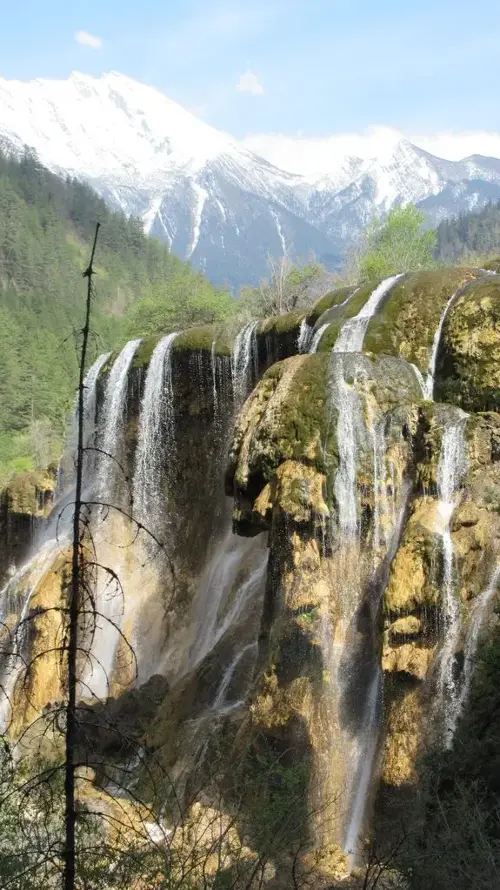
There’s a restaurant in the park, but I would recommend bringing your own food and drinks so that you won’t have to wait long to get something to eat. After exploring the park, head back to your accommodation in town for dinner.
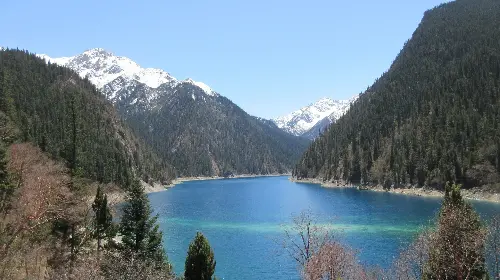
You’ll have to book a ticket at least a day before your trip. During high season, you might have to buy tickets as soon as they’re available. The high season is from April 1 to November 15, and the low season is from November 16 to March 31.
I would recommend going in autumn to see the colorful leaves come out. You don’t have to book a tour.
Day 4
After exploring Jiuzhaigou, go on a day trip to another natural wonder and UNESCO World Heritage Site, Huanglong National Scenic Reserve. The highlight of your trip is the view of the travertine pools. The surrounding mountains also add to the beauty of Huanglong.
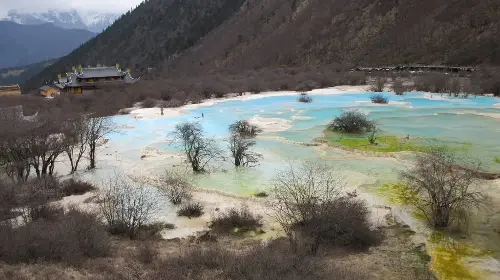
How to get to Huanglong: Board a bus bound for Songzhou from Jiuzhaigou station for around CNY 42, then from Songzhou take another bus to Huanglong Scenic Area.
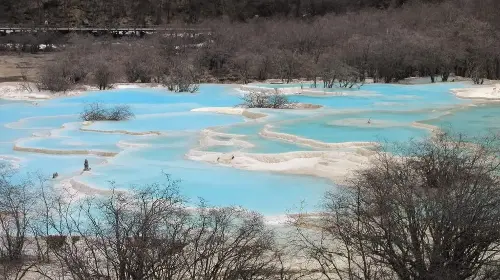
Fees: CNY 170 (April to November 15), CNY 60 (November 16 to March). You can take the cable car going up for CNY 80 and CNY 40 going down.
Day 5
Check out of your accommodation and make your way back to Chengdu. You can take the bus back to the city or the bus and train combo. Upon arriving in Chengdu, you can spend the rest of the day hanging out in your favorite place in the city, and eating at your favorite restaurant.
Chengdu
Day 6
Check out of your accommodation. You can spend more time hanging out in the city and catch the late afternoon train to Chongqing. Make this day your chill day after extensive travel the last few days. You can also leave earlier.
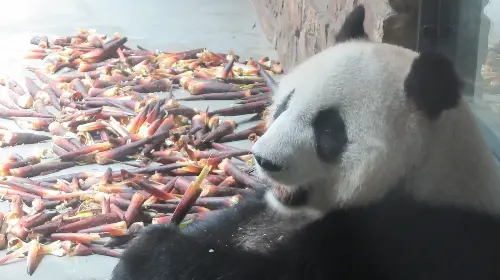
Chongqing
Day 7
Chongqing is a massive city with a land area and population that is bigger than many countries. It makes congested Metro Manila look small in comparison. However, the city has an extensive public transportation network, which makes it somewhat easier to explore.
Try to start sightseeing as early as possible to maximize your day. You can check out the Great Hall of the People and walk around Jiefangbei CBD. The latter has numerous shops and places to eat and drink.

Catch a glimpse of life centuries ago with a visit to Ci Qi Kou or also known as Porcelain Village. End your day in Hongya Cave for dinner.
Day 8
Get an early start to visit the ancient rock carvings in Dazu. You can do this as a long day trip from Chongqing. It’s a noteworthy addition to your itinerary because of how intricate the centuries-old carvings are.
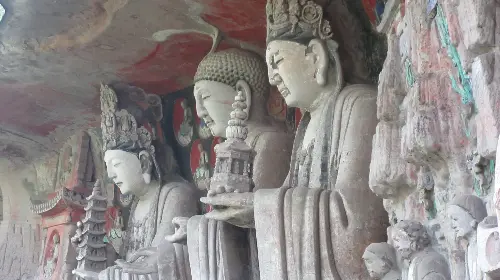
The Dazu Rock Carvings are also a UNESCO World Heritage Site. Baodingshan is one of the most famous sites to see the carvings. You’ll find thousands of detailed carvings showcasing different philosophies and aspects of Chinese culture.
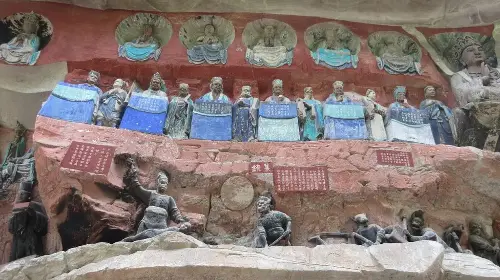
How to go: You can board a bus bound for Dazu County from Longtousi North Bus Station, Longtousi South Bus Station, and Chongqing Bus Station. Once in Dazu, hop on bus 205 to Baodingshan.
Fees: CNY 115 Baodingshan
Day 9
Go on another day trip, this time to Wulong to see one part of the UNESCO-listed South China Karst. The Three Natural Bridges are exactly what their names say they are. These bridges are hundreds of feet high and hundreds of feet thick.
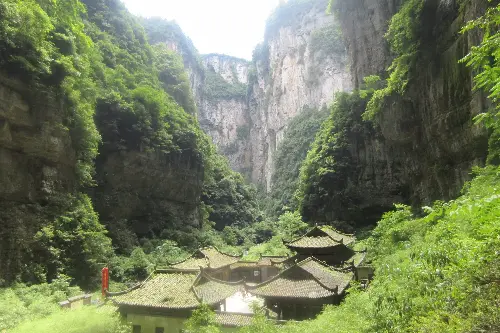
I would recommend walking through Longshuixia where you’ll see waterfalls and jagged cliffs. Visiting both places will already take up most of your day. If you have more time, you can visit Furong Cave and the Houping Giant Doline.
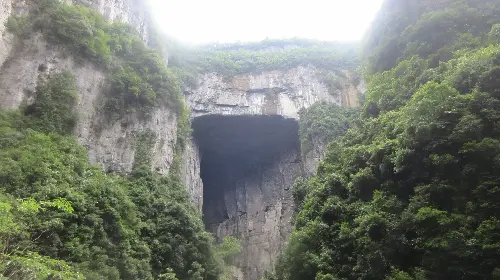
How to go: You can take the train bound for Wulong from Chongqing North Railway Station. From the station in Wulong, you can take a taxi to Xiannü Town Tourist Center. You can also take a long-distance bus from Longtousi Bus Station to Xiannü Town Tourist Center. Board a bus from the tourist center for approximately CNY 9 bound for the natural bridges and gorge.
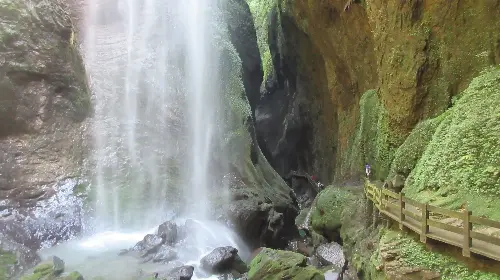
Fees: Three Natural Bridges CNY 70 (March to October) and CNY 40 (November to February), Longshuixia Fissure Gorge CNY 115.
Day 10
Check out of your accommodation. You can hang out in your favorite spots in the city and buy souvenirs before leaving for another part of China or return to Guangzhou for your return flight to Manila.
How much will you spend?
A budget of CNY 4,500 or roughly P35,500 for 10 days, includes a bed in a dorm room or a budget hotel, entrance fees for the parks and Dazu Rock Carvings listed above, budget meals, overnight hard sleeper trains, and public transportation.
This doesn’t include flights into China and your stay in Guangzhou or any other city you enter the country from the Philippines. Your biggest expense will be for transportation and attraction entrance fees. Food and accommodation in Chongqing, Chengdu and Jiuzhaigou are affordable.
– Rappler.com
